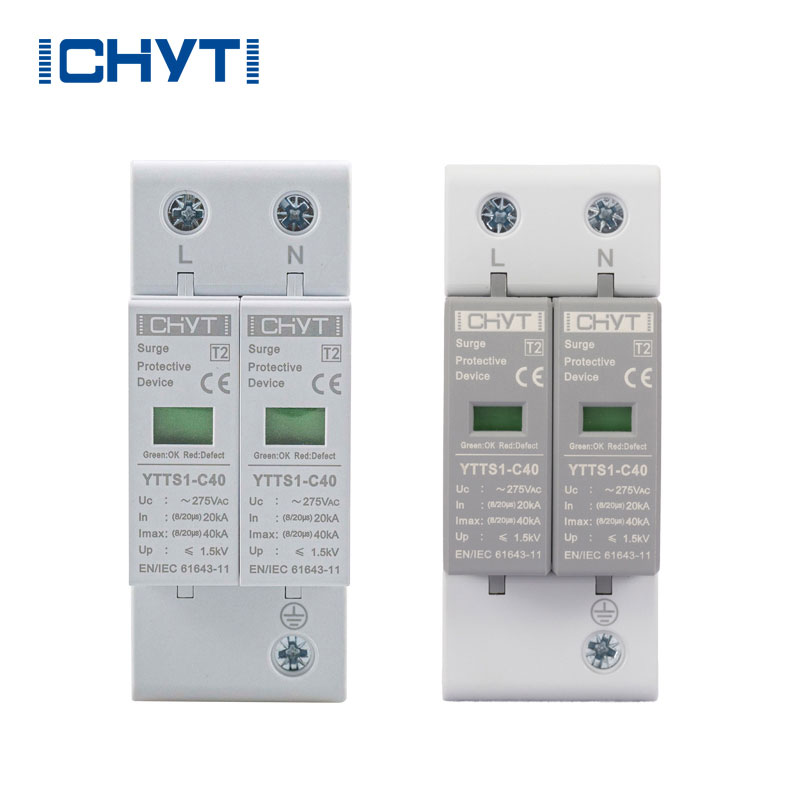Strategic Placement: Unveiling the Impact of Location on the Effectiveness of 4-Pole AC SPDs in Electrical Systems
2024-01-08
Introduction:
As electrical systems become increasingly complex and interconnected, the deployment of Surge Protective Devices (SPDs) becomes paramount in safeguarding against transient overvoltages. Among these, the 4-Pole AC SPD stands out for its ability to provide comprehensive protection. However, the effectiveness of these devices is not solely dependent on their design; the strategic placement within an electrical system plays a pivotal role. In this blog, we explore how the location of a 4-Pole AC SPD impacts its effectiveness, ensuring a harmonious integration into the overall surge protection strategy.
The Journey of a Surge:
1. Understanding Surge Pathways:
Surge events can originate from various sources, including lightning strikes, switching operations, or other electrical disturbances. The pathway these surges take through an electrical system is crucial in determining the potential impact on connected equipment.
2. The Role of SPDs:
SPDs act as interceptors, providing a designated pathway for surge currents to follow. The goal is to divert these currents away from sensitive electronic equipment, preventing potential damage and ensuring the continued functionality of the electrical system.
The Impact of Location:
3. Entrance Points and Main Distribution Panels:
Placing a 4-Pole AC SPD at the entrance point of an electrical system or the main distribution panel is a common strategy. This location allows the SPD to intercept surges before they propagate further into the system, offering a robust first line of defense.
4. Protecting Subpanels:
In large or complex electrical systems with subpanels, additional 4-Pole AC SPDs strategically placed at these subpanels provide localized protection. This approach ensures that surges are intercepted at different points within the system, minimizing the risk of propagation.
Coordination with Other SPDs:
5. Working in Tandem:
The location of a 4-Pole AC SPD should be coordinated with other SPDs within the system. By strategically placing SPDs at various points, the overall surge protection strategy can be optimized, ensuring a cohesive and comprehensive defense against transient overvoltages.
Distance and Wiring Considerations:
6. Short Paths, Reduced Impedance:
The length and impedance of wiring between the 4-Pole AC SPD and the equipment it aims to protect are critical factors. Shorter paths with lower impedance contribute to the efficiency of surge diversion, minimizing the risk of voltage stress on connected devices.
7. Avoiding Parallel Paths:
Care must be taken to avoid unintentional parallel paths for surge currents. Improper wiring or placement may create alternative routes for surges, reducing the effectiveness of the SPD. Ensuring a clear and direct path for surge currents enhances the SPD's performance.
Environmental Considerations:
8. Shielding from Environmental Factors:
The location of a 4-Pole AC SPD should also take into account environmental factors. Shielding the SPD from harsh weather conditions, moisture, and other environmental elements contributes to its longevity and reliability.
Continuous Monitoring and Maintenance:
9. Regular Inspection:
Regardless of the location, regular inspection and maintenance of the 4-Pole AC SPD are imperative. Ensuring that the SPD is in optimal condition and that there are no signs of wear or damage enhances its effectiveness in responding to surge events.
Conclusion:
In the intricate dance of surge protection, the effectiveness of a 4-Pole AC SPD is intricately tied to its strategic placement within an electrical system. Whether stationed at entrance points, main distribution panels, or subpanels, the goal is to intercept surges early, ensuring a harmonious and comprehensive defense. As electrical systems evolve, the strategic integration of 4-Pole AC SPDs into surge protection strategies becomes increasingly vital, contributing to the resilience and reliability of our interconnected world against the unpredictable forces of transient overvoltages.



